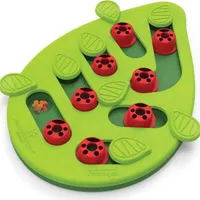Pica in cats: Vet’s guide to symptoms, causes and treatment
How to manage pica in cats, according to a vet
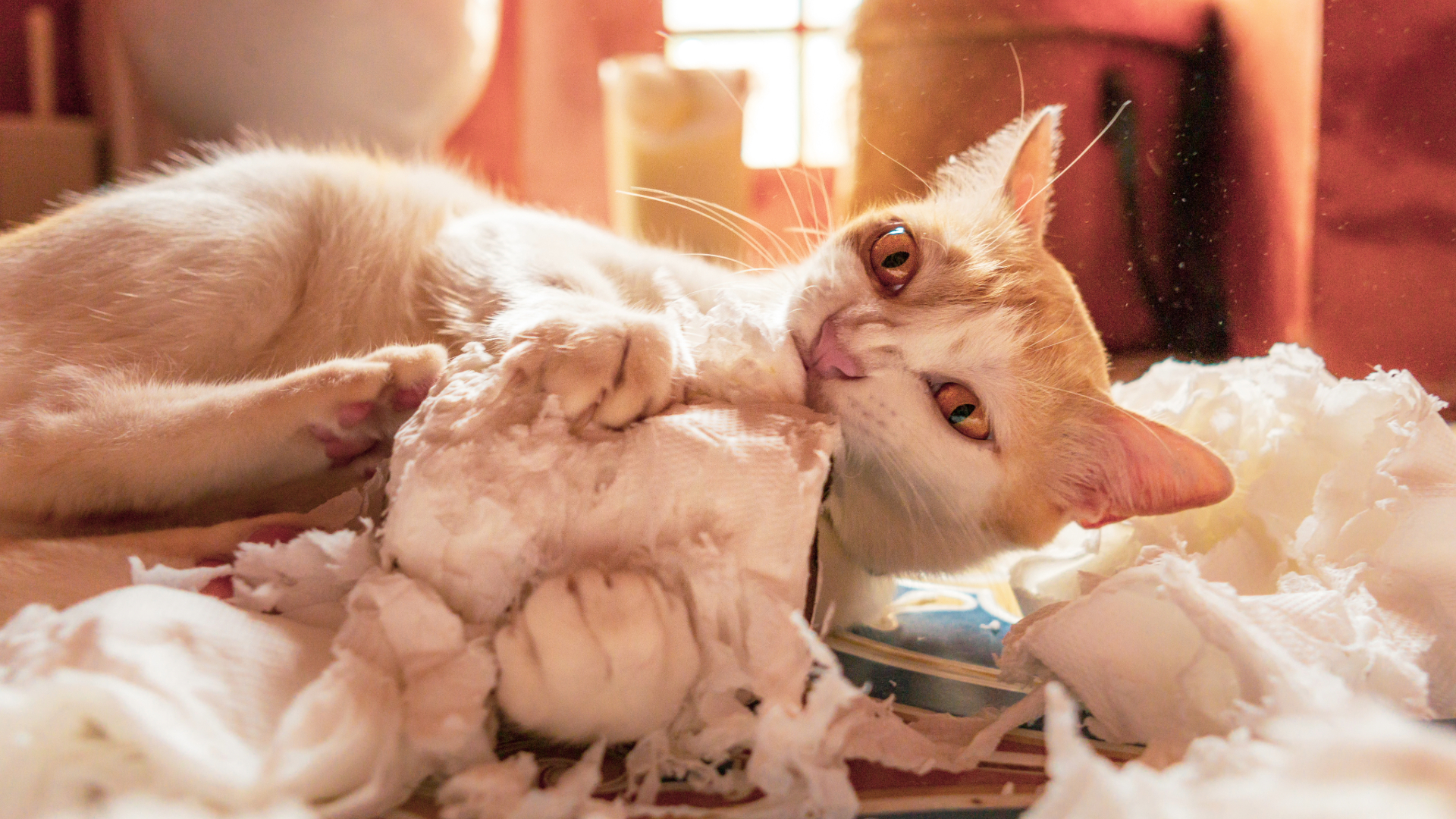
Pica in cats is a surprisingly common, yet often misunderstood, condition where our feline friends develop a tendency to eat non-food items. As a small animal vet with 14 years of experience, I’ve seen my fair share of cats nibbling on weird and wonderful things, including wool, plastic, cardboard, and even shoelaces!
While it might seem quirky or amusing at first, pica can be a serious concern – both from a medical and behavioral point of view. Many owners are unaware their cat has pica until something goes wrong – this could be a blockage, persistent vomiting, or a mysterious disappearance of socks.
Over the years, I’ve had numerous cases come through the consult room door with cats needing x-rays, endoscopy, or even surgery after swallowing something they shouldn’t have. Understanding pica early can make all the difference when it comes to preventing complications.
What is pica in cats?
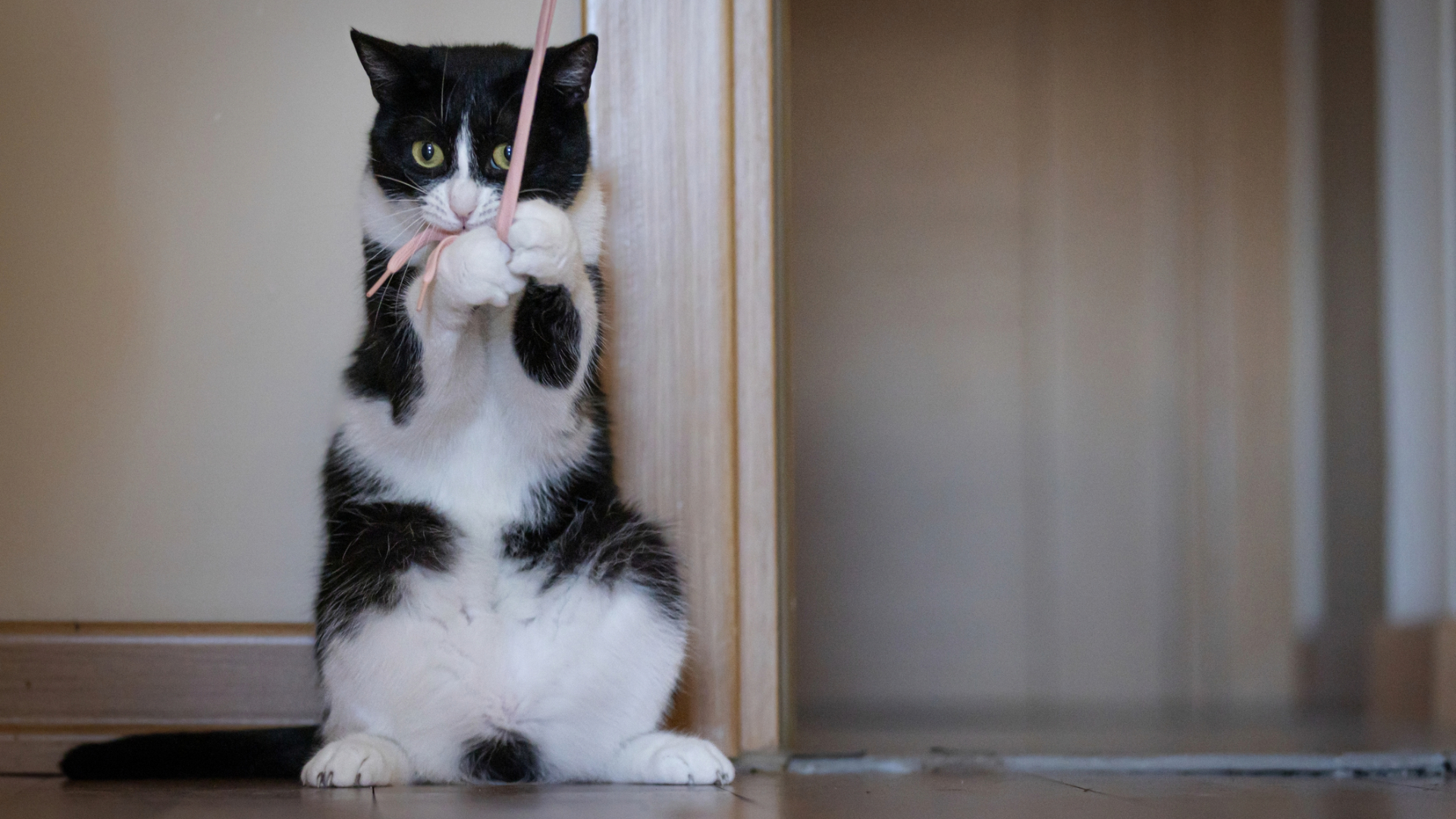
Pica is the term used to describe the act of eating non-food substances. In cats, this can include a wide variety of materials – from fabric, wool, and plastic to rubber bands, string, paper, and even cat litter. The key difference between pica and normal chewing is ingestion – it’s not just a bit of playful mouthing; cats with pica actively eat these inappropriate items.
This behavior is not limited to kittens, although it often begins when cats are young. It can persist into adulthood and may escalate if not addressed. Some breeds, like the Siamese, seem more predisposed, possibly due to their inquisitive and intelligent nature.
It’s important to note that pica isn’t just “bad behavior.” It can be a sign of an underlying medical, dietary, or psychological issue – and it’s something that needs veterinary attention.
Symptoms of pica in cats
The symptoms of pica can vary depending on what your cat is eating, how often they do it, and whether it’s causing secondary health problems. Look out for the following:
Get the best advice, tips and top tech for your beloved Pets
- Chewing or swallowing non-food items (e.g. wool, plastic bags, cardboard, cables)
- Frequent vomiting – especially if non-digestible items are present
- Lethargy or loss of appetite – signs of a possible blockage
- Changes in bowel movements – diarrhea, constipation, or no feces at all
- Abdominal pain or sensitivity
- Unusual interest in specific materials – seeking out and repeatedly chewing one type of object
- Pica behavior triggered by stress - for example, moving house, new pets, or changes in routine
If your cat is showing any of these signs, particularly if they are eating foreign objects or displaying gastrointestinal symptoms, it’s time to get in contact with your vet. Make sure to read up on the important health symptoms you shouldn’t ignore so that you are aware of what to look out for.
Causes of pica in cats
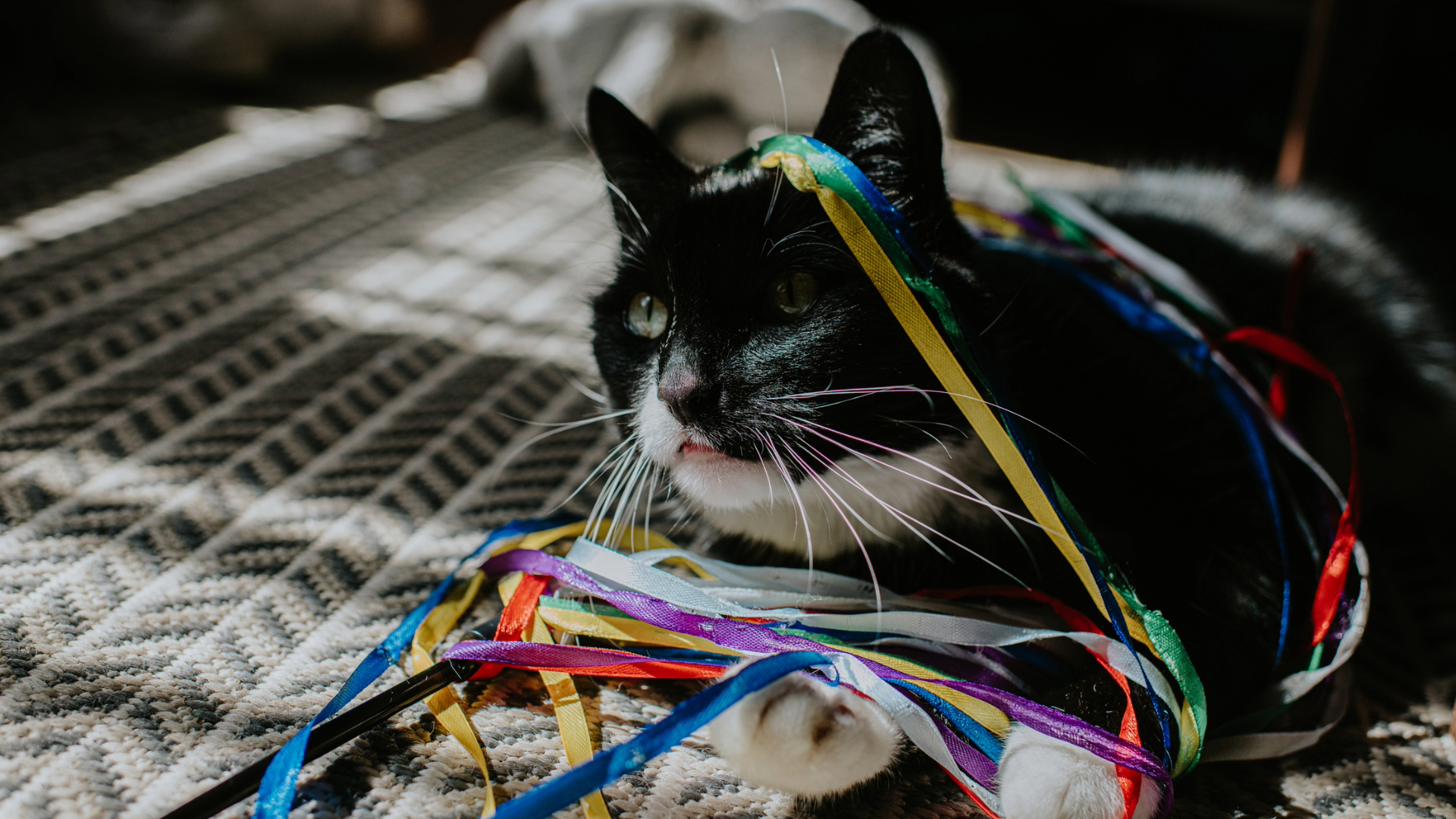
Pica in cats can have a wide range of causes – both physical and psychological. Here are the most common:
- Nutritional deficiencies: Some cats may instinctively try to make up for missing nutrients by eating strange items. A poor-quality diet or unbalanced homemade food can be to blame. Read our top tips on how to improve your cat’s diet.
- Medical issues: Conditions like anemia, gastrointestinal disease (such as inflammatory bowel disease or parasites), or dental disease may lead to pica.
- Genetics: Certain breeds are more prone to pica. Siamese and Burmese cats are classic examples.
- Early weaning: Kittens taken away from their mother too early may develop wool-sucking or fabric-chewing behaviors that evolve into pica.
- Stress or anxiety: Major life changes causing stress, boredom, or lack of environmental enrichment, can trigger compulsive behaviors, including pica.
- Attention-seeking: If a cat learns that eating odd things gets a strong reaction from their owner, it may repeat the behavior.
- Compulsive disorder: In rare cases, pica may form part of a feline compulsive behavior condition, similar to OCD in humans.
Getting to the root cause is vital, and often requires a combination of physical examination, lab tests, and a thorough behavioural history.
How do you treat pica in cats?
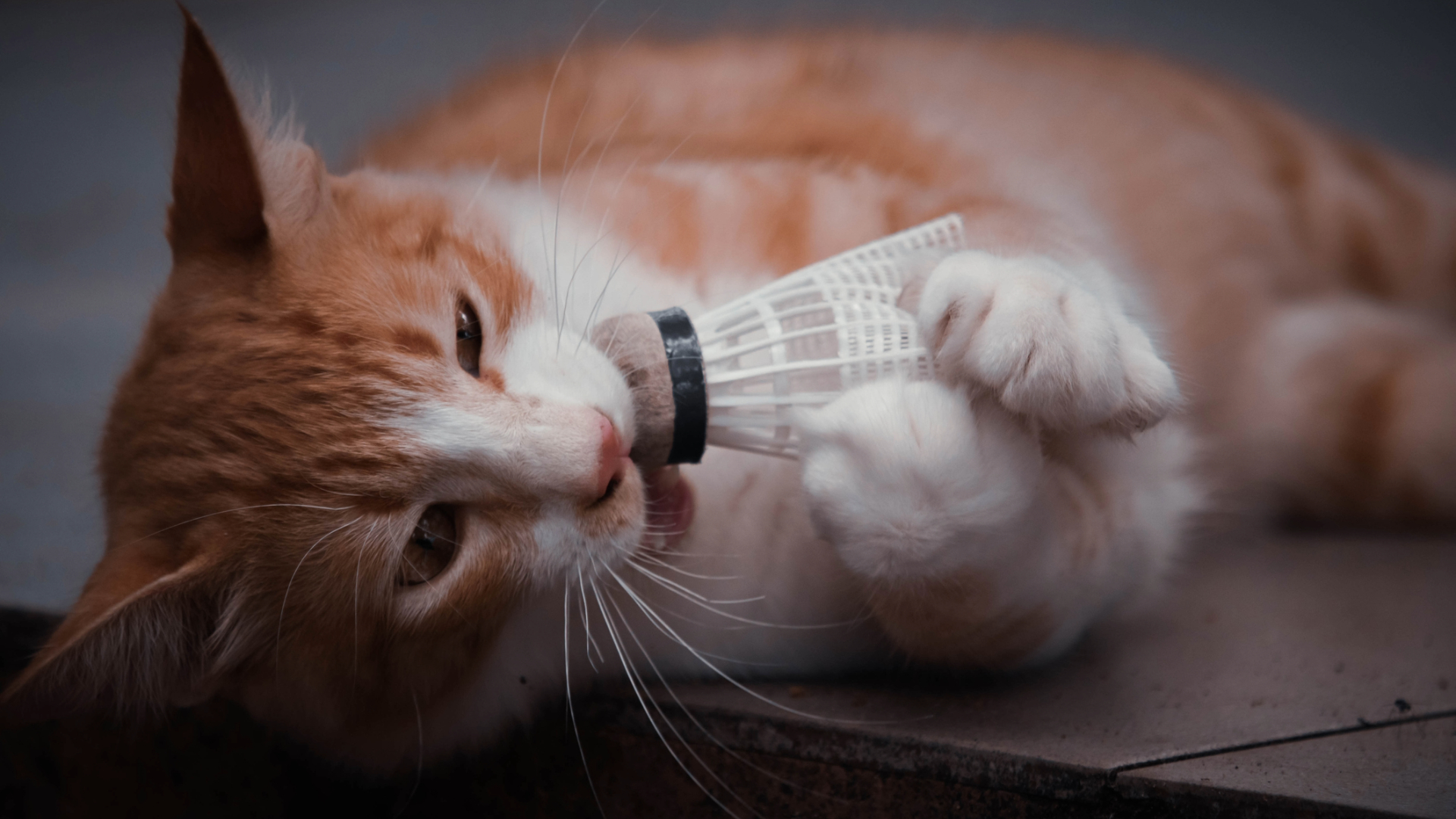
Treatment for pica in cats will depend entirely on the underlying cause, but here are the key strategies:
- Veterinary assessment: This should always be the first step. Your vet may suggest blood tests, fecal analysis, x-rays, or an ultrasound to rule out physical causes like anemia, parasites, or blockages.
- Dietary review: Ensure your cat is on a complete, balanced diet appropriate for their age and health status. Your vet or a qualified pet nutritionist can help.
- Environmental enrichment: Boredom is a common trigger for pica. Make sure you are providing lots of interactive toys, puzzle feeders, and high spaces to climb and explore. Make sure to schedule lots of regular play sessions to give your cat focused attention.
- Stress reduction: If your cat’s behavior is linked to anxiety, pheromone diffusers (like this one from Amazon), safe hiding spots, and routine-building can help. In some cases, anti-anxiety medication prescribed by a vet may be needed.
- Remove temptation: Keep objects your cat is drawn to out of reach. This includes string, hair ties, plastic bags, electrical cords, and fabric items. Use child locks or storage boxes if needed.
- Positive reinforcement: Never punish a cat for pica. Instead, reward alternative behaviors like playing or using a scratching post.
- Referral to a behaviorist: If your cat’s pica is severe or doesn’t respond to basic management, a referral to a veterinary behaviorist may be the next step.
Catstages Buggin' Out Puzzle | Amazon
This beginner-friendly puzzle feeder will keep your cat's boredom at bay, with eight compartments they'll need to solve to retrieve the treats. It's also an excellent way to slow down their eating pace and.
Prevention is key, and early intervention can stop the behaviour from becoming a long-term habit.
Is pica fatal in cats?

Pica in cats isn’t always life-threatening – but it definitely can be. The main danger is that your cat could ingest something that causes a gastrointestinal blockage, which can be fatal without prompt surgery. I’ve seen cats require emergency procedures after swallowing things like hair bands, ribbon, string, and even chunks of rubber matting.
Other risks include choking, toxic exposure (if they chew on harmful materials), and damage to the teeth or digestive tract. Chronic pica can also be distressing for owners and lead to strained relationships with their pets if the behavior isn’t understood.
If your cat has already swallowed something they shouldn’t have – particularly string-like items – do not try to pull it out. Instead, contact your vet immediately. These cases are classed as emergencies. In milder cases, pica can be managed successfully with lifestyle changes, behavioral support, and close monitoring. The sooner it’s addressed, the better the outcome for your cat.
Pica in cats is more than just a quirky habit – it’s a complex behavior that often stems from medical, dietary, or emotional needs. With the right diagnosis and support, many cats can overcome or manage their pica safely. If you suspect your cat may be displaying signs of pica, don’t ignore it – speak to your vet and take action early.
A little awareness goes a long way when it comes to protecting your curious cat from their own mischievous appetite.
Read next: Weird cat behaviors explained and why cats eat hair

Emma Chandley is a vet with 14 years of experience and has a keen interest in surgery. After graduating from the Royal Vet College in London in 2011, she achieved a postgraduate certificate in small animal surgery from the British Small Animal Veterinary Association and Nottingham Trent University. She was then awarded advanced practitioner status in the same discipline by The Royal College of Veterinary Surgeons. She has a black Labrador and two pygmy goats at home.
Edited by Megan Milstead.
This feature was last updated in August 2025 by Emma Chandley.
Emma Chandley is a vet with 14 years of experience and has a keen interest in surgery. After graduating from the Royal Vet College in London in 2011, she achieved a postgraduate certificate in small animal surgery from the British Small Animal Veterinary Association and Nottingham Trent University. She was then awarded advanced practitioner status in the same discipline by The Royal College of Veterinary Surgeons. She has a black Labrador and two pygmy goats at home.
